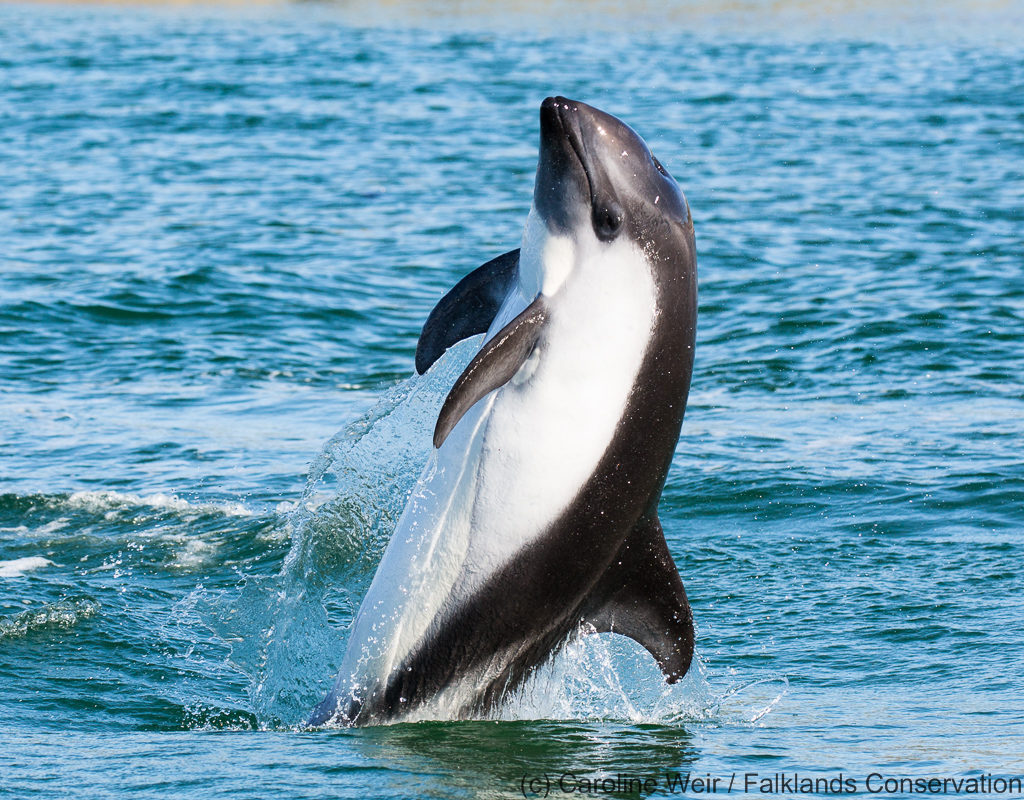Peale’s Dolphin: Discovering the Charming Marine Acrobat

Peale’s Dolphin, scientifically known as Lagenorhynchus australis, is a captivating species that graces the waters off the coasts of South America, particularly around the Falkland Islands, Tierra del Fuego, and the Strait of Magellan. Named after the American naturalist Titian Peale, these dolphins are celebrated for their unique characteristics and lively behaviors.

Peale’s Dolphins showcase a distinctive appearance with a bold black or dark gray coloration on their dorsal side, while their ventral side is adorned with lighter shades, creating a striking contrast. Adults typically reach lengths between 6 to 8 feet (1.8 to 2.4 meters), and their sleek bodies are marked by a well-defined, crescent-shaped eye patch. This eye-catching feature adds to their charismatic and recognizable presence.
These dolphins are highly social creatures, often observed in groups ranging from a few individuals to larger pods. Their playful nature makes them skilled acrobats, frequently engaging in activities like riding the bow waves of boats and leaping out of the water—a behavior known as porpoising. Peale’s Dolphins are also known for their communicative clicks and whistles, facilitating interaction within their pod.

Peale’s Dolphins are primarily found in the cold, subantarctic waters of the South Atlantic and South Pacific Oceans. They display a preference for coastal environments, making them frequently sighted in shallow bays, estuaries, and channels. Their range extends from southern Chile and Argentina to the subantarctic islands, creating opportunities for marine enthusiasts to witness their delightful displays.

While Peale’s Dolphins are not currently listed as a threatened species, they face various anthropogenic threats such as entanglement in fishing gear and habitat degradation. Continued monitoring and conservation efforts are essential to ensure the long-term well-being of these enchanting marine creatures.

For those eager to witness the charm of Peale’s Dolphins, the Falkland Islands and the waters around southern South America offer prime locations. Local boat tours and wildlife excursions provide opportunities to observe these dolphins in their natural habitat, allowing enthusiasts to appreciate their beauty while promoting responsible and sustainable tourism practices.

In conclusion, Peale’s Dolphin stands as a testament to the remarkable biodiversity of the world’s oceans. With their striking appearance and playful demeanor, these dolphins contribute to the allure of the marine ecosystems they call home, inviting admiration and appreciation from those fortunate enough to encounter them in the wild.



